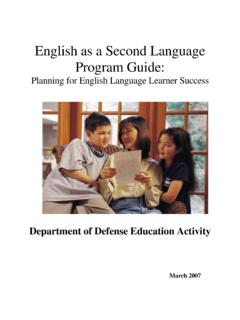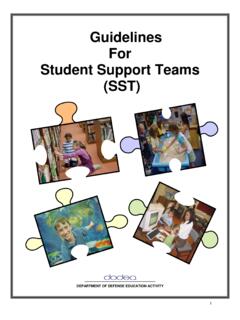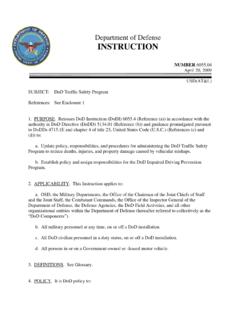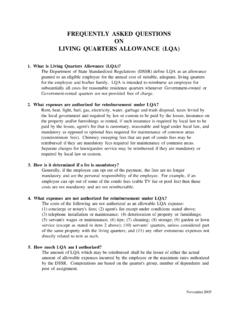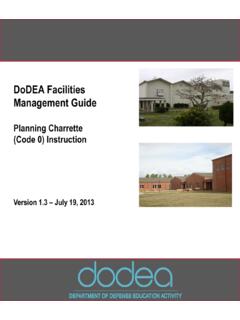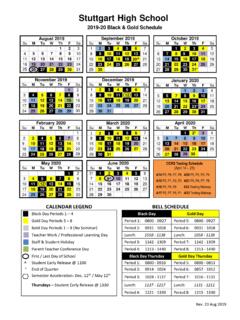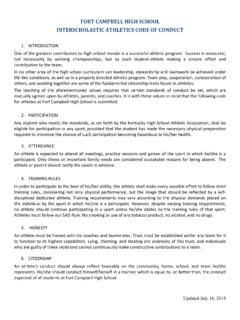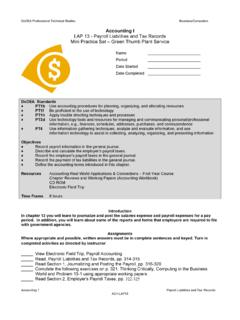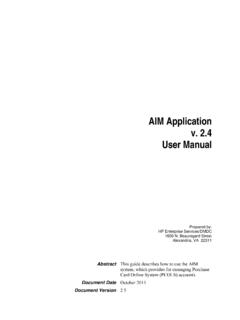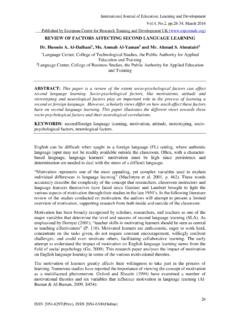Transcription of English as a Second Language Program Guide
1 English as a Second Language Program Guide : Planning for English Language Learner Success Department of Defense Education Activity March 2007 This page intentionally left blank DEPARTMENT OF DEFENSE EDUCATION ACTIVITY 4040 NORTH FAIRFAX DRIVE ARLINGTON, VA 22203-1635 Foreword This publication offers guidance to administrators and teachers in addressing the linguistic and educational needs of English Language learners by identifying students and developing programs that recognize their diverse ethnic and cultural backgrounds and experiences. The information in this Guide is intended to aid teachers and administrators when planning for and providing services to English as a Second Language students.
2 The information in this Guide was updated to reflect researched best practices and the alignment to national Program and English Language proficiency standards. The structure of the Guide is intended to follow the sequential approach of identification of English Language learners through Program implementation. The Guide is designed to be a flexible working document, adaptable to changing needs, and produced in loose-leaf format to allow for future revisions and additions of clarifying instructions, directives, and/or decisions. This Guide applies to all dodea personnel, parents, and sponsors and affects the process by which English Language learners in dodea receive linguistic and educational support services. This Guide , as a statement of policy and administrative guidance, shall not be interpreted to create any substantive or procedural legal rights to challenge agency action or inaction.
3 Teachers and administrators are encouraged to become familiar with and promote the content of this Guide and to assure that policy and procedures are consistently followed. The purpose of the English as a Second Language Program Guide : Planning for English Language Learner Success, is to provide guidance to dodea areas, districts and schools on the implementation of dodea regulation , English as a Second Language Programs, April, 2006. This Guide supersedes and cancels DS Manual , English as a Second Language Program , July 1998 and replaces previous administrative procedures and associated information for the ESL Program . The current revision reflects changes in the provision of services as suggested by the No Child Left Behind Act of 2001 and in the Office of Civil Rights document, Program for English Language Learners, available on the Department of Education (USDOE) website: Further information on legal and judicial matters affecting English Language learners can also be found on the USDOE website.
4 This page intentionally left blankDoDEA ESL Program Guide , March 2007 Table of Contents ii Table of Contents Page FOREWARD i TABLE OF CONTENTS ii INTRODUCTION I-1 CHAPTER 1 Program OVERVIEW 1-1 Goals of the ESL Program
5 1-1 ESL Program Procedures 1-3 ESL Student Team 1-3 ESL Review Team 1-3 Identification 1-4 Assessment\ Evaluation 1-4 Eligibility 1-5 Instructional Programs 1-5 Annual Monitoring of Student Progress 1-5 Annual Report
6 1-5 Annual Program Evaluation 1-5 ESL Program Task Timeline 1-6 ESL Teacher Responsibilities 1-7 Relationship with Parents 1-8 CHAPTER 2 ESL STUDENT IDENTIFICTION PROCESS 2-1 Eligibility Criteria 2-1 ESL Eligibility (Flow Chart) 2-3 Identification through the Screening Process 2-5 Home Language Questionnaire 2-5 The ESL Referral Process 2-5 Home Language Questionnaire (Flow Chart) 2-10 Summary of Steps: Home Language Questionnaire 2-11 ESL Referral Process (Flow Chart) 2-13 Summary of Steps.
7 Referral Process 2-14 Functioning Level of Language 2-15 CHAPTER 3 INSTRUCTIONAL Program 3-1 ESL Program Service Delivery 3-2 Exiting 3-3 Criteria for Exiting ESL Program 3-4 Classroom Support for Small ELL Populations 3-4 ESL Recommended Services Guidance 3-6 CHAPTER 4 SYSTEM-WIDE ASSESSMENT 4-1 Accommodations 4-1 Classification of Accommodations 4-2 Students Eligible for Accommodations 4-3 Selecting Accommodations 4-3 Sample Questions for Determining Accommodations 4-4 No Accommodations
8 4-5 ESL Alternate Assessment 4-6 Alternate Assessment Eligibility Criteria 4-7 ELL Participation in System-wide Assessment (Flow Chart) 4-8 ESL Accommodations Chart 4-9 Accommodations Most Frequently Offered by NAEP 4-10 CHAPTER 5 ANNUAL MONITORING OF STUDENT PROGRESS 5-1 Procedures for the Annual Monitoring of Student Progress 5-3 Frequently Asked Questions 5-5 CHAPTER 6 ANNUAL Program REVIEW 6-1 Review of ESL
9 Program 6-2 CHAPTER 7 ESL AND SPECIAL EDUCATION 7-1 The Special Education Pre-Referral Process 7-2 Steps in the Pre-Referral Process 7-3 The Special Education Pre-Referral Process (Flow Chart) 7-4 Information for the Pre-Referral Process 7-5 Information for the Pre-Referral Process for A Young Child 7-6 Formal Referral to CSC 7-6 Planning and Administering Assessments 7-7 Authentic/Alternative Assessment 7-8 Individual Assessment Reports and Results 7-9 Language Proficiency/ Dominance 7-10 Distinguishing Between Second Language Acquisition and
10 Disability Characteristics 7-10 Eligibility for Special Education Services 7-11 IEP Development 7-13 Characteristics of ELL Students With and Without a Disability 7-15 CHAPTER 8 OTHER SCHOOL PR
